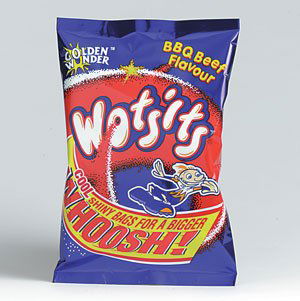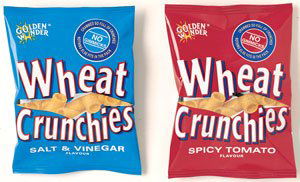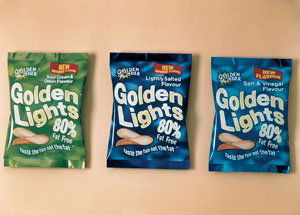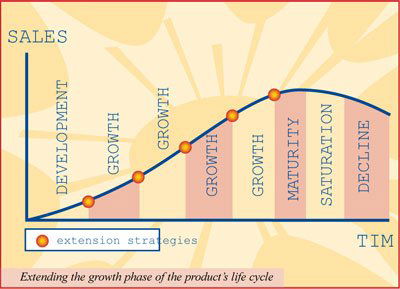
Golden Wonder has been one of the most easily recognisable household names for over fifty years. It has developed a product portfolio which includes crisps, such as Golden Wonder and Groovers, and snacks, such as Wotsits, Nik Naks, Wheat Crunchies and Jungle Fresh nuts.
Golden Wonder has always considered innovation to be important. The company pioneered the first ready salted crisps, as well as flavoured crisps – introducing Oxo, followed shortly by Cheese and Onion and Salt and Vinegar which remain the most popular flavour of crisps available today. In 1995, Golden Wonder was acquired by a management buy-out (MBO) team which has been determined to remain one step ahead of the competition through continuous innovation and perpetual change. A management buy-out occurs when the current management team of the business takes over ownership of the business where they are employed, with backing from institutional investors.
It is important that companies view today’s market-place as being dynamic rather than static. The most successful organisations in the competitive world are those which are market orientated and not product orientated, i.e. they analyse the changes that are taking place in the marketplace and respond to these changes. In order to appreciate exactly what it is that the market wants, an organisation must be prepared to carry out market research. Although the changes occurring in the market-place are beyond the direct control of the organisation, such change must be seen as inevitable and should not be feared.
This case study focuses on how Golden Wonder has responded to the constantly changing snack and crisp market. It examines the development of Golden Lights, a low fat potato snack, and considers how Golden Wonder has been able to anticipate a consumer need and satisfy it profitably. Golden Wonder was able to recognise some fundamental changes in factors external to the organisation which would change the very nature of the market in which it had been a major player for so long. Some of these changes would prove to be beneficial and others problematic. Devising a strategy to meet these challenges required extensive market research, considerable investment in research and product development and the careful implementation of a marketing strategy to launch and support the new product – Golden Lights. To begin with, let us consider the changing nature of the snack market and the reasons behind these changes.
A changing marketplace

Changes in society over the last decade have greatly affected the way we live. As the pace of life seems to get quicker and quicker, people have less time to prepare meals. There has been a rise in snacking or, as it is known in the food trade, grazing, with consumers choosing products which are convenient, portable and cheap. Fewer children are choosing school meals in the middle of the day and many adults are simply too busy to take a proper lunch break. More and more people are preferring to have a light snack at lunch time and a more substantial meal in the evening, giving rise to what has been called a lunch box culture. Added to this has been the rise in real incomes and independence for young people, a crucial group of consumers in the snack market, who now have far more of a say in what they eat and when.
A desire for healthy eating
At the same time, there have been growing concerns about the environment and the food chain. Consumers have become far more interested in how food is produced and exactly what it contains. In the late 1980s, there was growing public concern about preservatives and additives in food which were seen to be at best, unnecessary and at worst, harmful to health. This resulted in a move towards, or what was perceived by some to be a return to, more natural products.
Coupled with this was the media driven preoccupation with outward beauty, aimed predominantly at the female population. There was a general desire to eat healthily (consume less fat), lose weight and look good. The nutritional value and calorific content of food therefore became of much greater interest and consumers were even prepared to compromise on taste if they believed that the product contained fewer calories. Initially, however, low fat products tended not to taste as good as their full fat counterparts and consumers tended to diet and then binge – the yo-yo diet.
Although the snack market was marginally affected by the recession of the early 1990s, it quickly returned to high levels of growth with the adverse economic conditions being outweighed by the positive social effects. This suggested that demand for snacks was not particularly responsive to changes in income. The market for snack products continued to boom throughout the 1990s, with increasing numbers of people spending more money on these types of food. Since the numbers in the two key snacking age categories, children between 5 and 14 and adults aged 35 plus, are projected to rise by the year 2001, the demand for snacks is likely to continue to grow.

Political changes can also play a part in the snack market. The late 1980s saw the launch of a number of Government initiatives to encourage changes in the British diet. The advice was centred on the reduction of fat in the diet as this could have beneficial effects on the level of coronary heart disease. The Government set out clear targets and guidelines on how these might be achieved. Regulations on the description of ingredients on packaging were introduced, including the percentages of fat and saturated fats. Confusing and misleading claims were outlawed and this has continued through to the present day. Most recently, the ‘Health of the Nation’ initiative was launched, designed to make people more aware of the effect of lifestyle on health through a programme of education.
Having identified these changes affecting the snack market and the opportunities they afforded, Golden Wonder launched Golden Lights in 1991.
Research and development

Golden Wonder has been able to take advantage of important technological innovations, largely because of a commitment to investment in research and development. The original ‘low fat crisps’ on the market were made possible by the development of a process known as ‘steam stripping’. Part fried crisps were subjected to jets of stream which blasted off the excess fat and then the heat of the steam finished off the cooking process. Golden Wonder developed a completely new process for the manufacture of Golden Lights, borrowing technologies from the pasta and baking industries. First, potato flakes and granules are reconstituted and formed into a sheet like pasta, only using potato rather than flour. The crisps are then stamped out of the sheet and dried in ovens and baked. These dried slices of potato are then fried. Because they now have little moisture in them, they pick up very little vegetable oil and hence become low fat. Without the extensive research and development of these processes, using the new technologies available, the introduction of Golden Lights would not have been possible.
The introduction of Golden Lights
The marketing strategy chosen for the launch of Golden Lights was significant. The new product was presented as a low fat alternative to the established Golden Wonder Crisps. The primary claim at this time was that Golden Lights had ‘40% less fat than standard crisps’. The production process was designed deliberately to make Golden Lights brittle and crisp and the design of the packaging was tied into the original Golden Wonder Crisps.
Product feedback
Critical to any marketing strategy is the collection of product feedback. The full range of market research was employed for the introduction of Golden Lights:
- desk research continued to analyse secondary data, such as social trends, and investigated the performance of other markets
- discussion groups were set up to consider the whole issue of health and food
- concept testing was undertaken to provide qualitative information
- quantitative research involved fieldwork to collect primary data and included tests on pack design, blind product testing against the competition and micro testing.
Every angle on the whole concept of the new ‘better for you’ products and their claims had to be considered. The diagram (to the right) illustrates the importance of feedback and the ongoing nature of the decision making process.
Results

The results for the new Golden Lights were surprising. Although the launch was highly successful and high trial rates were achieved, it became clear from the market research that consumers liked the product but were surprised that it did not taste like ‘normal’ Golden Wonder Crisps. It was a great tasting product but was not really a crisp. Secondly, although consumers were interested in healthy eating, their prime motivation was still to look good. Therefore it was not so much the low fat claims which were important as the assumption that low fat meant fewer calories.
Repositioning a product

Golden Wonder consequently decided to reposition the product and it was relaunched in 1993. The key change was to establish the product’s own identity, moving it away from crisps and establishing it as a potato snack with its own unique taste. The product itself was modified slightly so that the primary claim could now be that there were ‘Less than 99 calories per pack’. This was seen as a key threshold used by many diet products in other markets. Standard crisps have around 150 calories per pack so the reduction in calories was considerable. As Golden Lights were no longer to be marketed as a crisp, it was possible to make them less brittle and softer in response to the results of the consumer testing.
The packaging was changed to reposition the brand away from the mainstream crisps to help create its own brand identity. The Golden Wonder name was now used as a corporate brand name to endorse the quality the customer could expect. The relaunch was extremely successful but Golden Wonder still could not afford to be complacent and continued to monitor and research consumer perceptions and attitudes in this highly competitive and ever changing market. In 1996, further research showed that interest in the low fat sector had shifted again, with the emergence of a desire for ‘inner health’. Controlling calories and looking good were seen as less important and were being replaced by a desire to live longer and better. This desire was embracing men as well as women and their children.
It was time for Golden Lights to be repositioned once again and they were relaunched in 1997 with new flavours, a new texture and new packaging. The primary claim moved back to fat; ‘80% fat free and great tasting’. This was seen as an important advantage over the competition and worthy of prominence. New pack sizes were offered and a 10-pack multipack was introduced. To support this relaunch, various above and below the line promotion strategies have been used, including on-pack offers and cross promotions with other Golden Wonder brands. The company is currently undertaking its biggest sampling campaign ever and so far over 3 million consumers have tried the new product.
Conclusion

The story of Golden Wonder Lights highlights the need for successful organisations to be aware of the constantly changing position of their products within the market and of the constantly changing market-place. Using a range of extension strategies, Golden Wonder has been able to extend the growth phase of the product’s life cycle. The study also reinforces the importance of market research to monitor the performance of the product and the consumers’ attitudes towards it. A successful firm has to be prepared to move with the times. Its products and the position of those products in the market must be flexible and adaptable.
